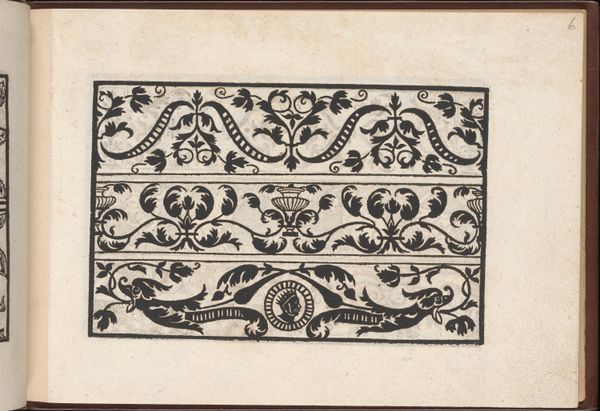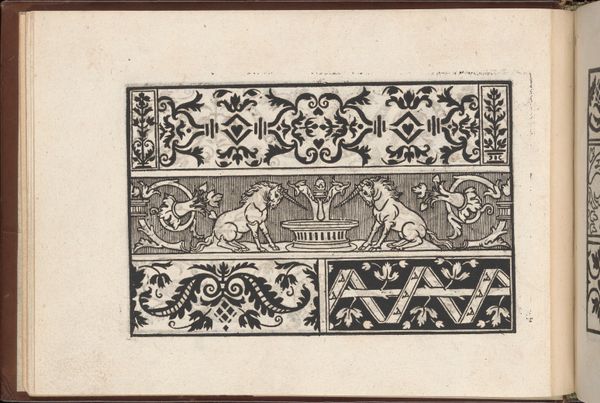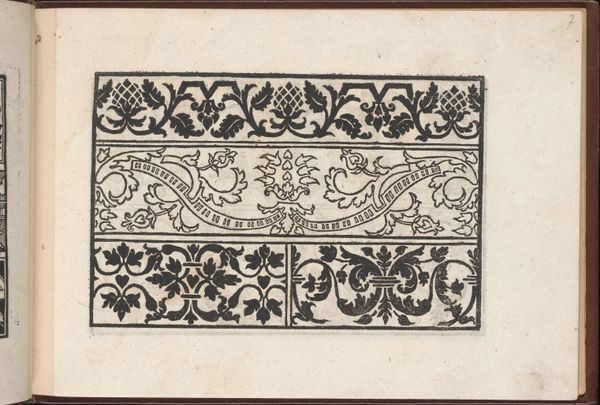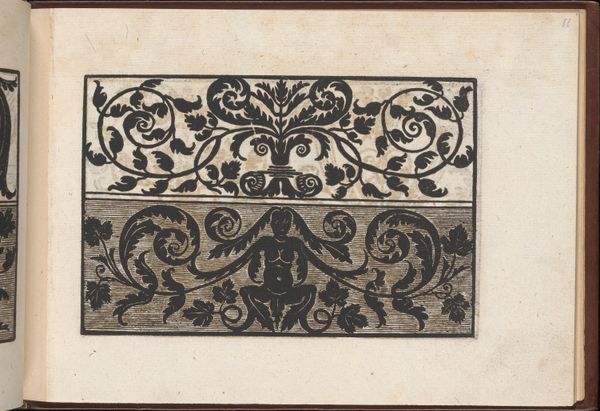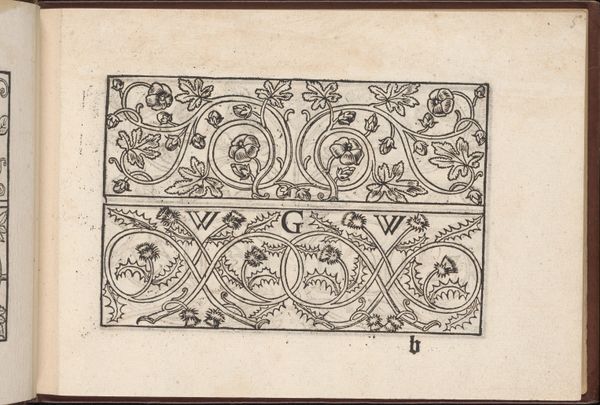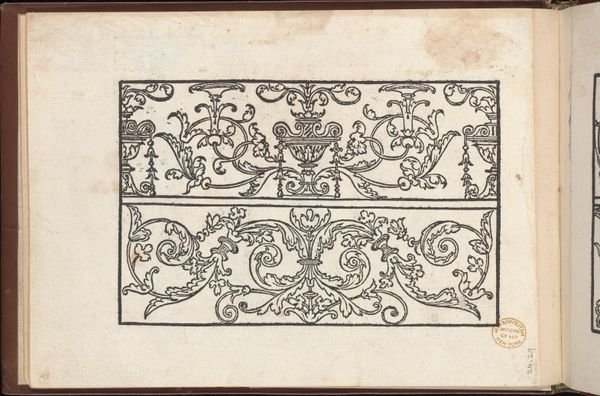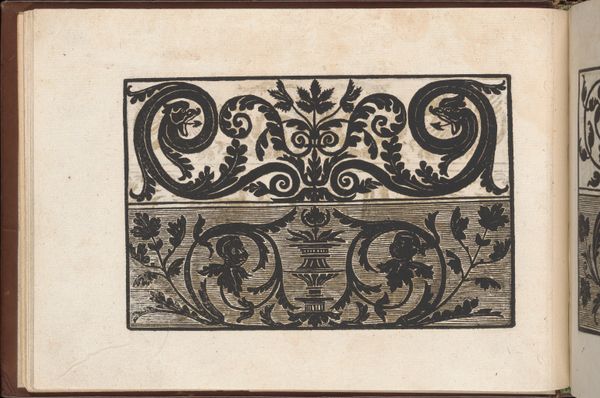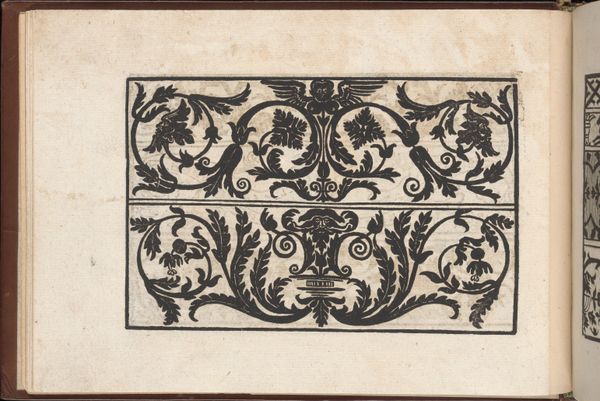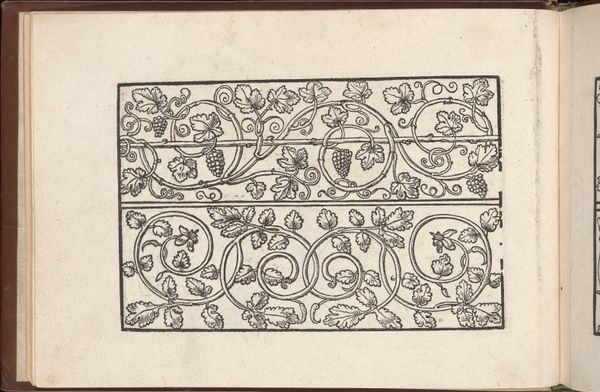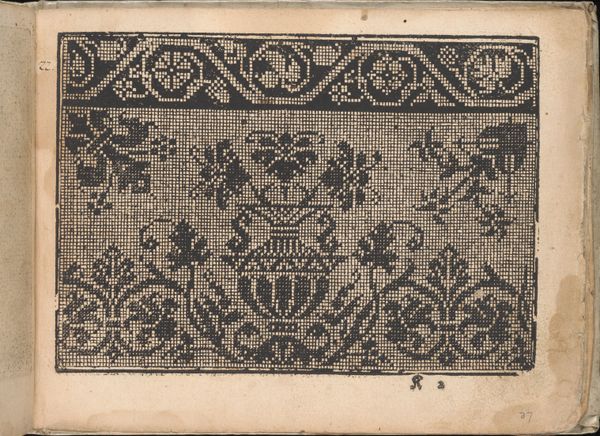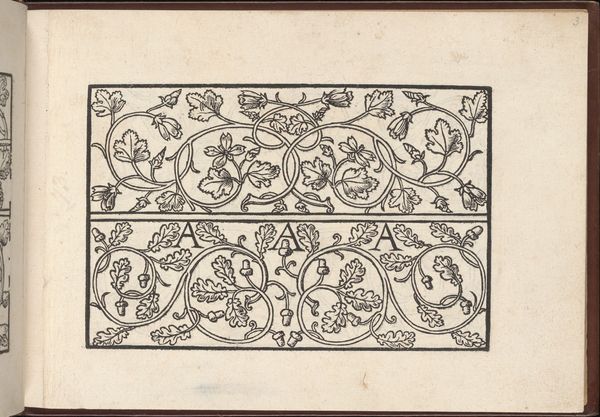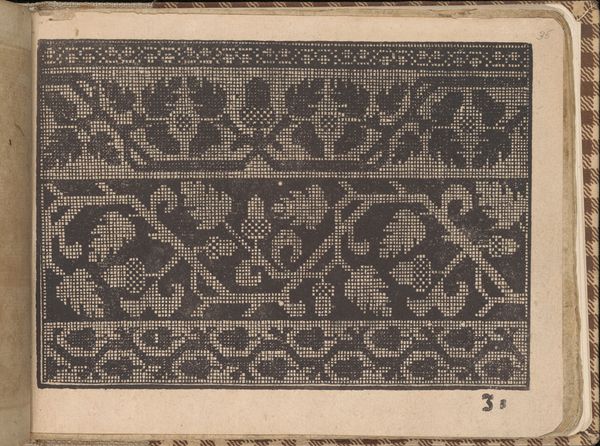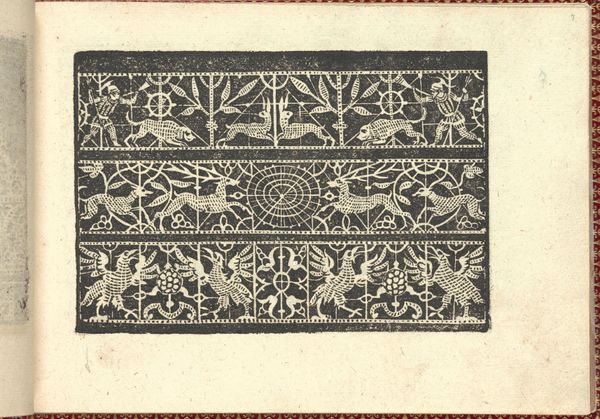
Page from Eyn Newe kunstlich moetdelboech alle kunst (Page 8v) 1532
0:00
0:00
drawing, graphic-art, print, woodcut
#
drawing
#
graphic-art
# print
#
11_renaissance
#
woodcut
#
northern-renaissance
Dimensions: Overall: 5 11/16 x 8 1/16 in. (14.5 x 20.5 cm)
Copyright: Public Domain
Curator: What strikes me immediately is the graphic quality. It’s stark, bold, and seems incredibly precise, but there is also a roughness there in the execution. Editor: Precisely. We're looking at a page from Peter Quentel’s "Eyn Newe kunstlich moetdelboech alle kunst (Page 8v)," created around 1532. It's a woodcut, offering a fascinating glimpse into Northern Renaissance design and its distribution via printmaking. You see how these kinds of pattern books acted as crucial vehicles in transmitting design ideas across different artistic trades? Curator: Absolutely. Thinking about the woodcut medium itself – what was that like? It’s so clearly laborious. Carving that detail into wood... was this design made for a single work, or were such patterns applied to many surfaces and goods? Editor: Both, and more! The texture from the printing process, the paper itself, it points to the world of artisans and the guilds who relied on pattern books like this. They wouldn't necessarily create artworks to be hung on a wall or set on a pedestal but they produced something nonetheless incredibly vital for the creation of culture. Curator: So the 'artist,' Quentel, positions themself differently, operating in the sphere of reproducibility. I'm really struck by that density and interplay. Do you notice that repeated leaf and pinecone motif within those ornamental bands? What do these symbolic structures suggest to you? Editor: I agree! And this combination of flora motifs with classical motifs shows how contemporary and historic influences can co-exist to represent continuity. Also, the woodcut offers visual insights on materials of that era, telling about design that reflects availability, technological adaptation, economic status and social need of the materials. Curator: Indeed, its value is undeniable, especially given the social and cultural context in which designs like these are produced and received, shaped by institutions and even socio-political powers. Editor: That's what is interesting. It goes to show you that even in the most decorative object lies the potential for profound connection to history, labor, material and craftsmanship.
Comments
No comments
Be the first to comment and join the conversation on the ultimate creative platform.
